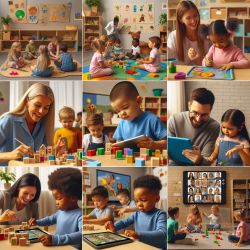Introduction
As speech-language pathologists, our mission is to empower children with the tools they need to communicate effectively. One key area of focus is understanding how nonverbal working memory (WM) influences language processing, particularly in children with specific language impairment (SLI) and autism spectrum disorders (ASD). Recent research offers insights into how nonverbal WM can predict morphosyntactic processing, providing us with valuable strategies to enhance our therapeutic approaches.
The Study: A Closer Look
The study titled The role of nonverbal working memory in morphosyntactic processing by children with specific language impairment and autism spectrum disorders investigates how nonverbal WM contributes to grammatical processing in children. The researchers compared 84 children with SLI, ASD, and typical development (TD), examining their performance on a grammatical judgment task and a visual WM task.
Key Findings
- Children with SLI and ASD showed differences in sensitivity to grammatical errors compared to their TD peers.
- Nonverbal WM was a predictor of morphosyntactic processing across all groups.
- The study supports the "wrap-up" account, suggesting that sentence context aids in processing errors occurring later in sentences.
Implications for Practice
Understanding the role of nonverbal WM in language processing can guide us in tailoring interventions for children with SLI and ASD. Here are some practical applications:
- Targeted WM Training: Incorporate activities that strengthen nonverbal WM, such as memory games and visual sequencing tasks, into therapy sessions.
- Contextual Learning: Emphasize the use of contextual cues in language exercises to enhance morphosyntactic processing.
- Individualized Approaches: Assess each child's WM capacity to tailor interventions that align with their cognitive strengths and weaknesses.
Encouraging Further Research
While this study provides valuable insights, further research is needed to explore the nuances of WM and language processing. Practitioners are encouraged to engage with ongoing research, contribute to data collection, and apply evidence-based practices in their work.
Conclusion
The intersection of nonverbal working memory and language development offers a promising avenue for enhancing therapeutic outcomes. By integrating these findings into practice, we can better support children in overcoming language challenges and unlocking their full potential.
To read the original research paper, please follow this link: The role of nonverbal working memory in morphosyntactic processing by children with specific language impairment and autism spectrum disorders.










